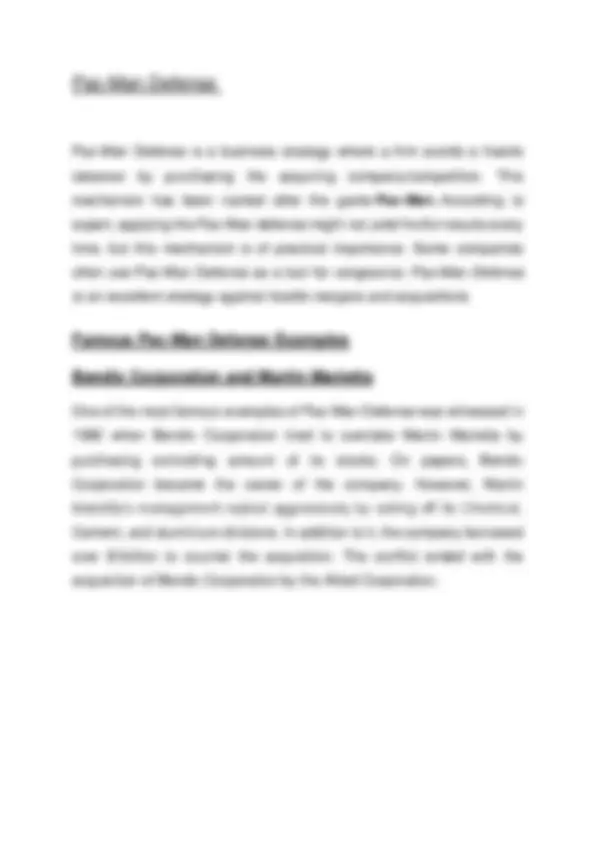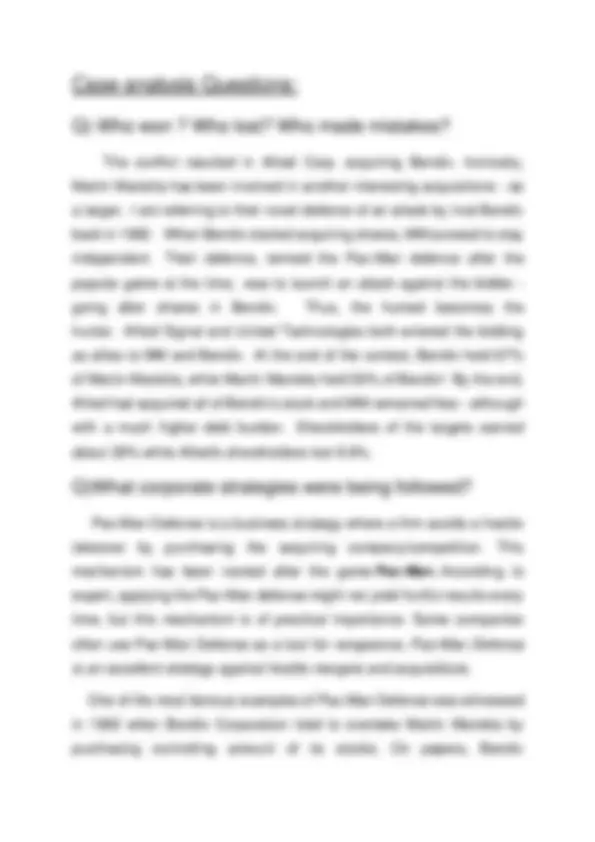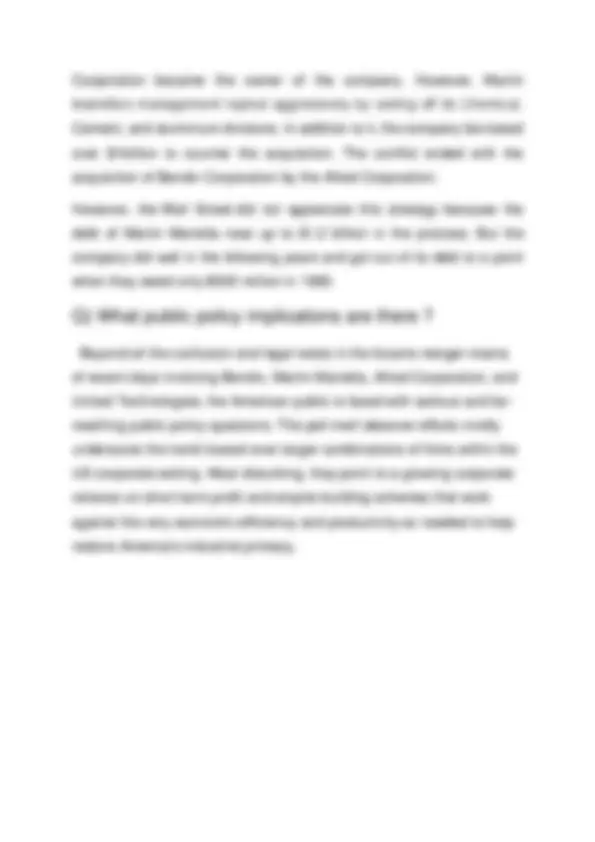





Study with the several resources on Docsity

Earn points by helping other students or get them with a premium plan


Prepare for your exams
Study with the several resources on Docsity

Earn points to download
Earn points by helping other students or get them with a premium plan
Community
Ask the community for help and clear up your study doubts
Discover the best universities in your country according to Docsity users
Free resources
Download our free guides on studying techniques, anxiety management strategies, and thesis advice from Docsity tutors
case analysis on financial management
Typology: Essays (university)
1 / 5

This page cannot be seen from the preview
Don't miss anything!




August 1982 marked the beginning of a unique adventure in American industrial activity. The Bendix Corp. attempted to acquire Martin Marietta by purchasing a controlling amount of its stocks. On papers, Bendix Corporation became the owner of the company. On August 25, 1982, Bendix announced a tender offer for approximately 44.5% Martin Marietta’s common stock at a price of $43 per share. On September 7, Bendix increased its offer to $48 per share and on September 10 , Bendix stated that it would purchase approximately 55% of Martin Marietta’s common stock .On August 30, five days after Bendix announced its tender offer, Martin Marietta countered with a tender offer for approximately 50.3% of Bendix common stock at a price of $75 per share. United Technologies Corporation jumped into the fray on September 7 with its tender offer for approximately 50.3% of Bendix common stock at a price of $75 per share. On September 15, united technologies increased its offer to $85 per share. At the end of the contest, Bendix held 67% of Martin Marietta, while Martin Marietta held 50% of Bendix! By the end, Allied had acquired all of Bendix's stock and Martin Marietta’s remained free - although with a much higher debt burden. Shareholders of the targets earned about 38% while Allied's shareholders lost 8.6%. The conflict resulted in Allied Corporation acquiring Bendix. Bendix persuaded Allied Corporation to act as a "white knight," and the company was sold to Allied the same year.
The conflict resulted in Allied Corp. acquiring Bendix. Ironically, Martin Marietta has been involved in another interesting acquisitions - as a target. I am referring to their novel defence of an attack by rival Bendix back in 1982. When Bendix started acquiring shares, MM avowed to stay independent. Their defence, termed the Pac-Man defence after the popular game at the time, was to launch an attack against the bidder - going after shares in Bendix. Thus, the hunted becomes the hunter. Allied Signal and United Technologies both entered the bidding as allies to MM and Bendix. At the end of the contest, Bendix held 67% of Martin Marietta, while Martin Marietta held 50% of Bendix! By the end, Allied had acquired all of Bendix's stock and MM remained free - although with a much higher debt burden. Shareholders of the targets earned about 38% while Allied's shareholders lost 8.6%.
Pac-Man Defense is a business strategy where a firm avoids a hostile takeover by purchasing the acquiring company/competition. This mechanism has been named after the game Pac-Man. According to expert, applying the Pac-Man defense might not yield fruitful results every time, but this mechanism is of practical importance. Some companies often use Pac-Man Defense as a tool for vengeance. Pac-Man Defense is an excellent strategy against hostile mergers and acquisitions. One of the most famous examples of Pac-Man Defense was witnessed in 1982 when Bendix Corporation tried to overtake Martin Marietta by purchasing controlling amount of its stocks. On papers, Bendix
Corporation became the owner of the company. However, Martin Marietta’s management replied aggressively by selling off its Chemical, Cement, and aluminium divisions. In addition to it, the company borrowed over $1billion to counter the acquisition. The conflict ended with the acquisition of Bendix Corporation by the Allied Corporation. However, the Wall Street did not appreciate this strategy because the debt of Martin Marietta rose up to $1.2 billion in the process. But the company did well in the following years and got out of its debt to a point when they owed only $500 million in 1983.
Beyond all the confusion and legal twists in the bizarre merger-mania of recent days involving Bendix, Martin Marietta, Allied Corporation, and United Technologies, the American public is faced with serious and far- reaching public policy questions. The pell-mell takeover efforts vividly underscore the trend toward ever larger combinations of firms within the US corporate setting. Most disturbing, they point to a growing corporate reliance on short-term profit and empire-building schemes that work against the very economic efficiency and productivity so needed to help restore America's industrial primacy.